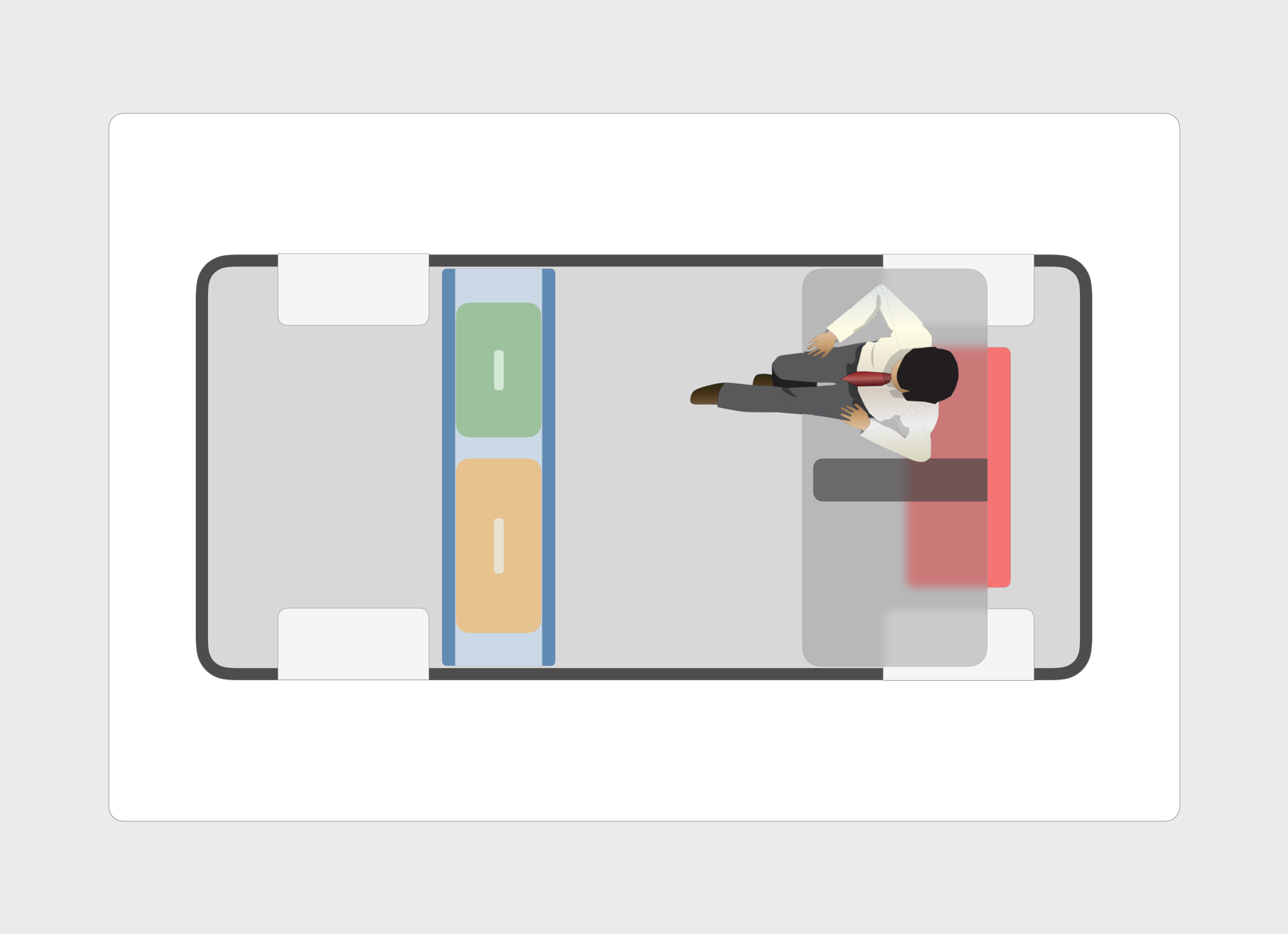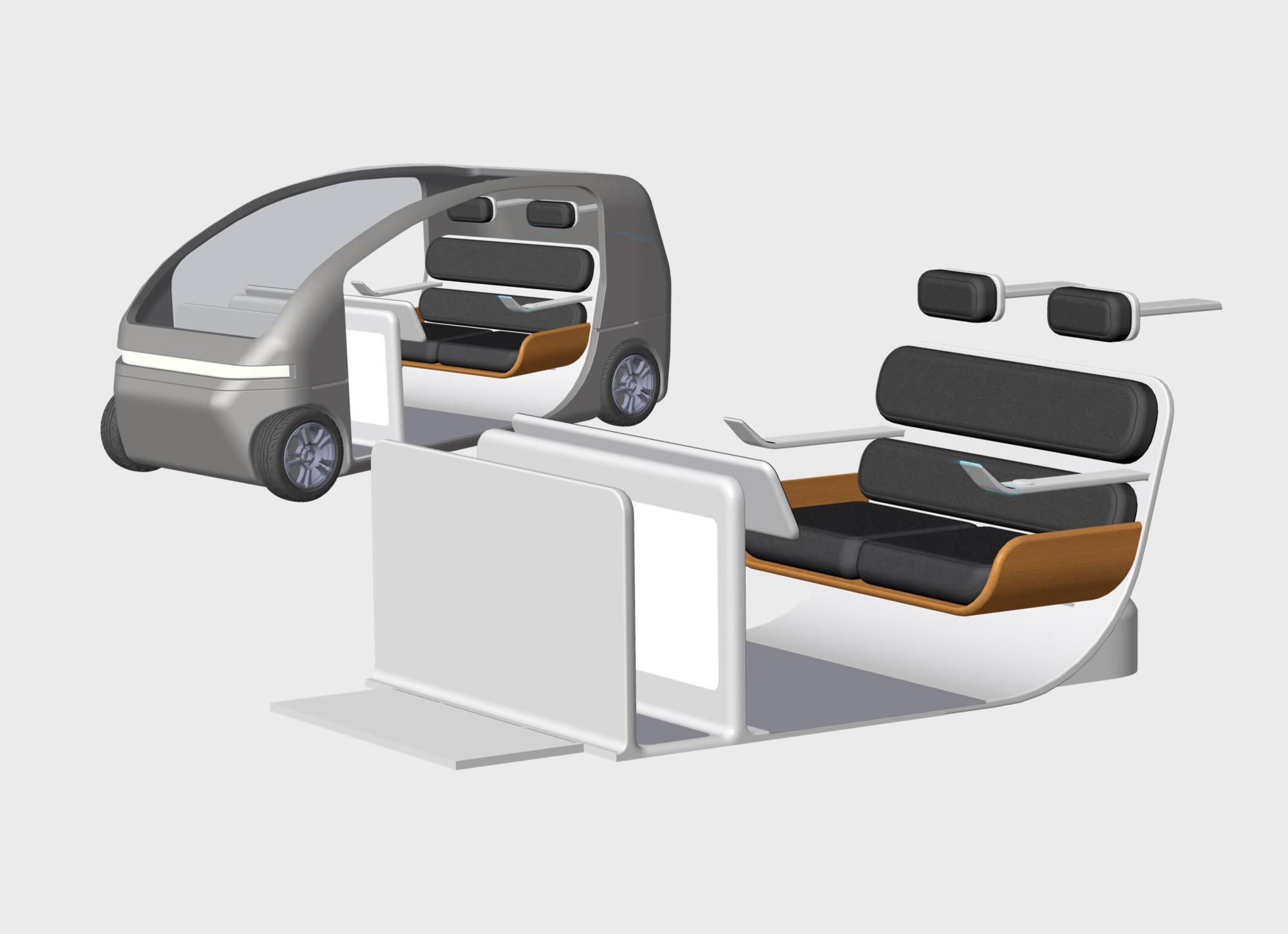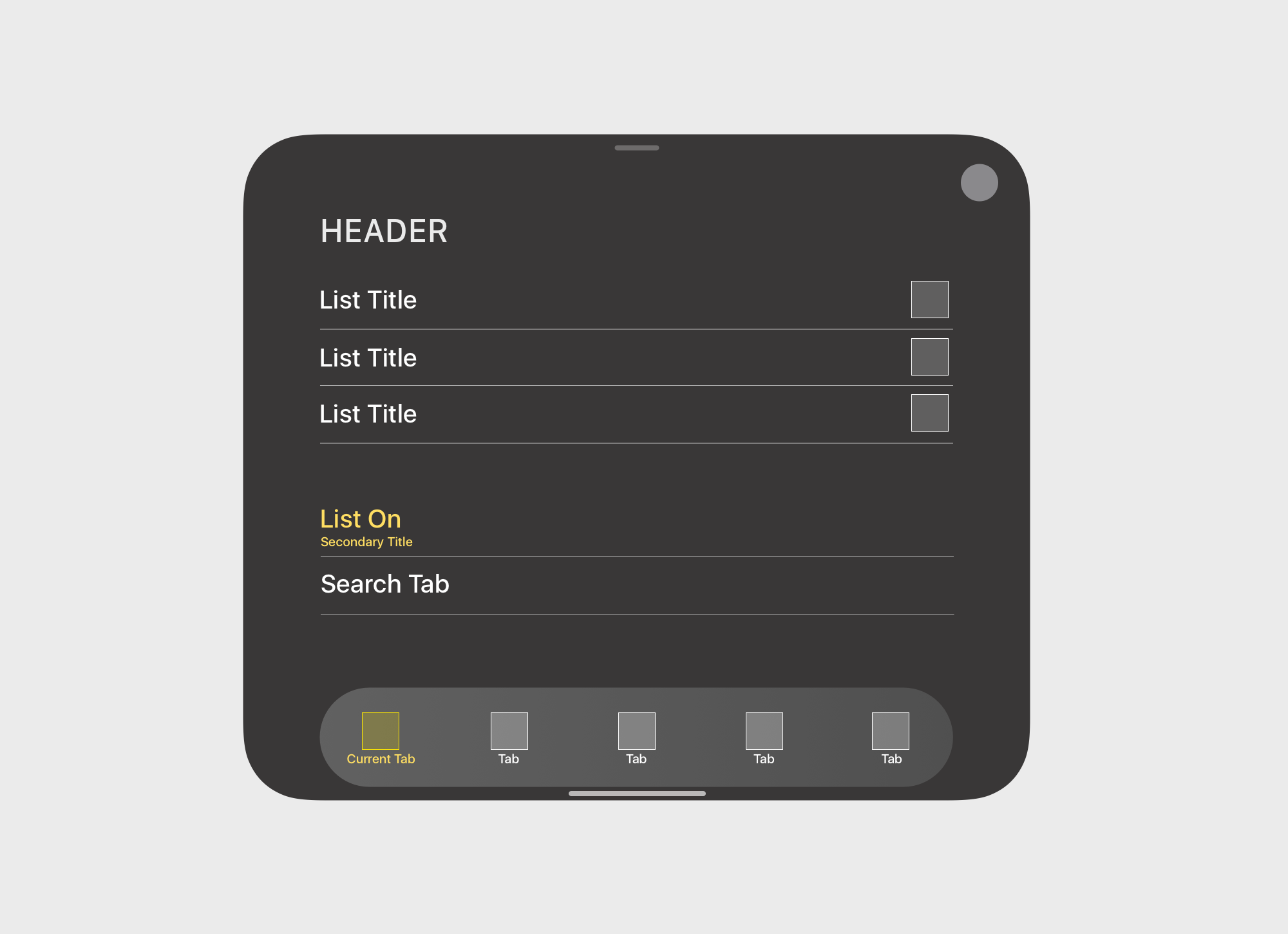Defining the Space and the Scope
Lyft Air was conceptualized with the intent to solve the delays faced by passengers at airport security during peak hours. Daily, long lines leave passengers both stressed and even stranded.
Given the prominence of rideshare as a means to arrive at an airport, it is a logical next step to take advantage of the time spent commuting for airline checking ins and airport security. Lyft Air is a purpose-designed user experience that streamlines rideshare with airports.
Concept Ideation and Generation
The goal of the project was to design and animate an interface + interior for a Level 4 autonomous experience. As Lyft Air, the project concept followed suit with Lyft’s fun, simple, and technology-driven brand image.
Since Level 4 enables autonomy in most driving scenarios, the Lyft Air interior is designed with an emphasis on neutral comfort and accessibility. A large center screen provides leading information while two individual screens enable personalized control.
Interior and Exterior Modeling
By removing the driver’s seat, the interior of Lyft Air provides ample space and easy luggage access all the while fitting within the package of a typical small hatchback. Large sweeping curves and bench seats identify a modern, yet casual space.
The security scan at the front of the vehicle is open atop and on the sides to enable easy access and loading of luggage into Lyft Air.
Creating the User Experience
By conducting check-in and security from within Lyft Air, airport traffic can be greatly reduced with a TSA Pre-Check like service for ride shares. Using biometrics such as facial recognition, Lyft Air can provide seamless transitions from drop-off to airline gate.
From within Lyft Air’s interface, riders can quickly glance through trip information, airport maps, and manage personal details during the ride to the airport.




